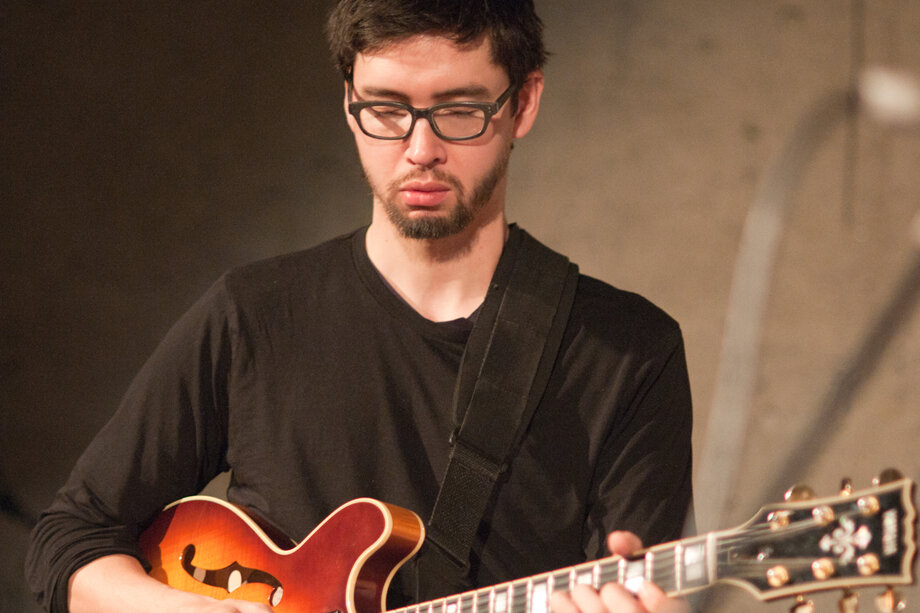Miles Okazaki - "Timing"
 When our friends at Symphony Space approached us about recommending an artist to feature as a part of their annual Music of Now Marathon, we quickly suggested composer-guitarist Miles Okazaki.Miles is originally from Port Townsend, Washington. He holds degrees from Harvard, Manhattan School of Music, and Juilliard, and was the 2nd place finalist in the 2005 Thelonious Monk Guitar Competition. He has honed his skills in bands led by Stanley Turrentine, Kenny Barron, and Steve Coleman, among others.We've presented Miles eight times since 2007, including the CD release concerts for his albums Mirror and Generations (Sunnyside). Additionally, Miles spent the month of May last year working on new material in our space as a part of our Jazz Gallery Residency Commissions program, which culminated in a concert featuring music that will appear on his next release.Tomorrow night at Symphony Space, Miles and drummer Dan Weiss will present a concert of spontaneously composed material informed by their longstanding collaborative history. Tickets are still available: reserve yours here.Below are a few excerpts from the program notes for the event:
When our friends at Symphony Space approached us about recommending an artist to feature as a part of their annual Music of Now Marathon, we quickly suggested composer-guitarist Miles Okazaki.Miles is originally from Port Townsend, Washington. He holds degrees from Harvard, Manhattan School of Music, and Juilliard, and was the 2nd place finalist in the 2005 Thelonious Monk Guitar Competition. He has honed his skills in bands led by Stanley Turrentine, Kenny Barron, and Steve Coleman, among others.We've presented Miles eight times since 2007, including the CD release concerts for his albums Mirror and Generations (Sunnyside). Additionally, Miles spent the month of May last year working on new material in our space as a part of our Jazz Gallery Residency Commissions program, which culminated in a concert featuring music that will appear on his next release.Tomorrow night at Symphony Space, Miles and drummer Dan Weiss will present a concert of spontaneously composed material informed by their longstanding collaborative history. Tickets are still available: reserve yours here.Below are a few excerpts from the program notes for the event:
Miles Okazaki / Dan Weiss"Timing"Miles Okazaki, GuitarDan Weiss, DrumsGuitarist Miles Okazaki and Drummer Dan Weiss have been developing a rhythmic language for over a dozen years. They create textures and rhythmic structures by weaving together material from a wide variety of sources - a recent performance was described by Ben Ratliff in The New York Times as demonstrating "the new jazz musician's inexhaustible options as they fit ideas together without stopping." Their work together is documented on four recordings: Dan Weiss' Tintal Drumset solo and Jhaptal Drumset Solo are hour-long expositions of Indian Tabla repertoire on the drumset, accompanied by Okazaki. Miles Okazaki's albums Mirror and Generations are rhythmic works for small group, built on the core of the drum-guitar engine....The music you hear tonight will be a spontaneous construction, using materials and techniques from Weiss and Okazaki's collective body of work. The duo's presentation of a continual, large-scale, rhythmic metamorphosis invites the audience to explore notions of "hearing" time, and the variety of ways that the passage of time can be played with, distorted, broken, and put back together.
